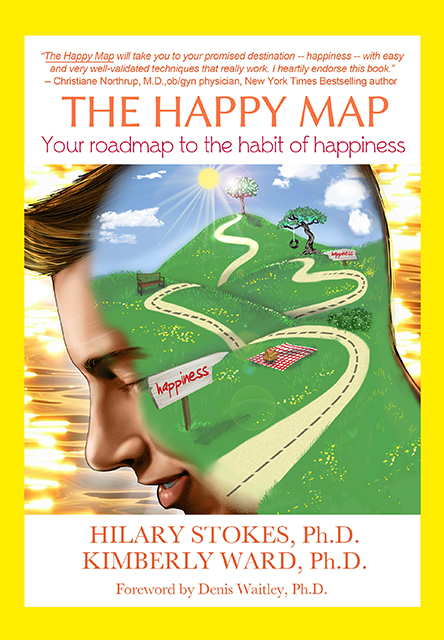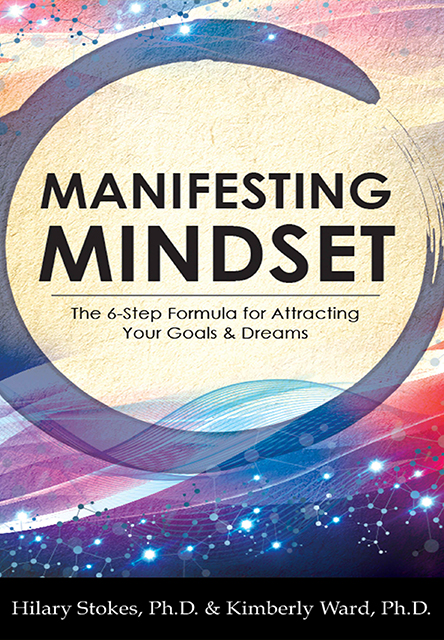Here are several scientific advances that are at the heart of The Happy Map:
- According to neural plasticity, you have the ability to shape, mold, and strengthen your neural pathways of happiness. In fact, you have neural circuits dedicated to happiness and play. The more you activate these circuits, the stronger they become. Happiness is a “muscle” you can develop with practice and conditioning. 1
- Your emotions play an executive role in being optimistic. This is a significant paradigm shift that means you can’t just talk or think your way through your feelings. In other words, to develop the habit of happiness you have to increase your emotional intelligence. 2
- Stress hormones take priority over happy hormones, such as serotonin. As a result, if you don’t diffuse stress, you won’t have as many brain receptors available for happiness hormones. 3
- Using your strengths is far more effective to cultivating happiness than attempting to resolve your weaknesses. The understanding of neural pathways allows us to recognize that if you are focused on weaknesses you will tend to strengthen weaknesses. 4
- You develop and build happiness pathways through the habit of your thoughts, perceptions, emotions, feelings, and actions. Thoughts alone are not enough to develop the habit of happiness. The strategy for being happy is a holistic journey of mind, body and spirit. 5
The Number 1 Paradigm Shift
When Talking Is Not Enough
It’s neurologically illogical to talk your way through stressful feelings. You can’t talk your way out of stress, unhealthy patterns, or anxiety just as you can’t talk your way through a broken bone or burst appendix. You have to take specific steps to get through this discomfort. If talking about it were enough, then rates of depression, anxiety, and stress wouldn’t be increasing every year. From 1998 to 2007, the use of medications for mental health issues increased from 44 percent to 57 percent. 6 Fortunately, awareness of the mind body relationship is also increasing. It’s well understood that stress negatively impacts physical and emotional well-being. In the years to come, the mind-body relationship will play an increasingly significant part in strategies that lead to happiness.
Just consider this fact: in biochemical reality, it can take at least 20 minutes for stress hormones released during the stress response to return to normal levels.7 This is only if you’re actively focused on diffusing the stress response. Without conscious effort, it can take several hours. Your body and emotional mind work behind the scenes to keep you on heightened alert even if your analytical mind is thinking a positive thought. This is why you still feel anxious and stressed before an important work presentation even though you’ve told yourself to remain calm and relaxed. The feelings of anxiety and stress are signals that you have more going on under the surface that your positive thinking is not resolving. No matter how hard you try, you just can’t get there from here.
When the stress response is triggered, you simply cannot superimpose positive thoughts and expect to reverse the effects of this integrated, whole-body neurobiological response. You can try to tell yourself you’re calm, cool, and collected, but if your muscles tighten, your heart beats faster, and your breath is short, you’re unlikely to succeed. You might momentarily feel some relief with a positive thought, however, the residue from the stress response lingers. After the initial rush of warning signals, behind the scenes your body remains on heightened alert for several hours. This usually occurs just below the radar of conscious awareness and impacts the quality of your thoughts, feelings, and actions.
From a brain science perspective, the stress hormone cortisol and the neurotransmitter serotonin compete for the same receptor sites in the brain. Serotonin is responsible for making you feel calm, happy, and connected to positive thoughts.8
Unfortunately, when you’re stressed, cortisol takes biological priority over serotonin. At these times, you have no real choice but to remain in a more stressed state until you release tension and calm your nervous system. Most people have adapted to this tension and are unaware that they are living in a constant state of residual stress.
Hope is Here
With a small amount of effort, you can disengage the stress response and guide your body and mind back to feeling secure, present, and empowered. Only now, are you truly ready to realize the power of your positive thinking. The long-term health benefits of a mind-body approach are enormous when you consider how detrimental stress is to your physical body and happiness potential. The significance of using a mind body approach to increasing happiness can be likened to drinking enough water versus feeling dehydrated, or getting enough exercise versus living a sedentary lifestyle. The solutions are straightforward, and the results are dramatic.
Rewire Your Brain – Neural Pathways of Happiness
Attaining happiness is more than an outcome of an emotional shift or feeling experience. It results from a series of practical steps. When you apply these steps, you rewire your brain on a daily basis to experience happiness. You give yourself the natural brainpower to respond with optimism instead of stress. This moment-to-moment experience builds new neural pathways and results in long-term happiness and resiliency.
The Happy Map is a revolutionary approach that proposes a rather significant shift in traditional methods. It invites you to step out of the comfort zone of applying a single-sided approach and step into the power of holistic happiness. It simply takes modern research and presents a working solution to a universal aim—the pursuit of lasting happiness. The new science of happiness opens new doors and offers new hope to feeling better in our daily lives. The Happy Map will take you on a step by step journey to developing the habit of happiness. In this practical roadmap you will tap into your innate ability to be happy and to change the pathways in your brain associated with stress and rewire new ones for happiness. By the time you finish the Happy Map you will have learned a new lifestyle for living the habit of happiness in your daily life.
References
- LeDoux, J. (2003). Synaptic self: How our brains become who we are. New York: Penguin.
Schwartz, J. (2003). The mind and the brain: Neuroplasticity and the power of mental force. New York: Regan Books.
- Lynn, D., et al. (1995). Prefrontal cortex. American Journal of Psychiatry, 152.
Goleman, D. (1995). Emotional intelligence. New York: Bantam Books.
- Davis, K., Charney, D., Coyle, J., Nemeroff, C. (2002). Neuropsychopharmacology: The fifth generation of progress. Brentwood, TN: American College of Neuropsychopharmacology.
Dinan, T. (1994) Glucocorticoids and the genesis of depressive illness: A psychobiological model. British Journal of Psychiatry, 164, 365–371.
Ulrike, M., Wadsak, W., Stein, P., Spindelegger, C., Mitterhauser, M., Holik, A., Bieglmayer, C., Kletter, K., Kasper, S., Lanzenberger, R. (2008). DHEAS and cortisol correlate with hypothalamic serotonin-1A receptors. Annals of General Psychiatry, 7(Suppl. 1), S220.
- Seligman, M., Rashid, T., Parks, A. (2006, November). Positive psychotherapy. American Psychologist, 774–788.
- Doidge, N. (2007). The brain that changes itself. Stories of personal triumph from the frontiers of brain science. New York: James H. Silberman Books.
Merzenich, M., Tallal, P., Peterson, B., Miller, S., Jenkins, W. (1999). Some neurological principles relevant to the origins of and the cortical plasticity based remediation of developmental language impairments. In J. Grafman & Y. Christen (Eds.), Neuronal plasticity: Building a bridge from the laboratory to the clinic (pp. 169–187). Berlin: Springer-Verlag.
- (2009, April) Combat stress at work to promote health. Focus. Retrieved from http://apps.humana.com/marketing/documents.asp?file=1143441
- Atkinson, B. (2005). Emotional intelligence in couple’s therapy. Advances from science and the neurobiology of intimate relationships. New York: W. W. Norton and Co.
- Dinan, 1994.



Reviews
There are no reviews yet.